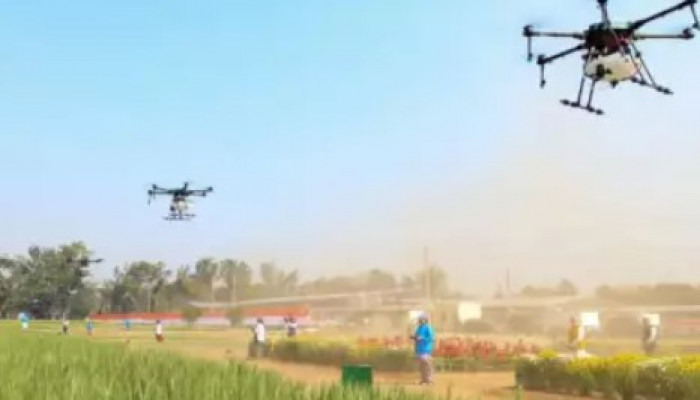First batch of indigenous anti-drone systems deployed by army along China border
- In Reports
- 12:28 PM, Mar 21, 2024
- Myind Staff
The Army has deployed an initial batch of seven new indigenous integrated drone detection and interdiction systems (IDD&IS) along the northern borders with China. Meanwhile, DRDO is developing more potent directed energy weapon (DEW) systems such as high-energy lasers and high-powered microwaves.
The vehicle-based IDD&IS, capable of both "soft kills" through jamming and "hard kills" via lasers, possesses a detection range of 5 to 8 km. It can jam hostile drones within a range of 2 to 5 km during "soft kill" operations, while its effective "hard kill" range extends beyond 800 meters.
The officer stated that the Army Air Defence (AAD) has inducted the Mark-1 variants of the IDD&ISs, which are produced by DRDO and Bharat Electronics. These systems will supplement the existing counter-drone capabilities. Additionally, more advanced versions of IDD&IS with extended interception ranges are expected in the future.
He further stated that the systems offer an integrated capability to detect drones or unmanned aerial vehicles (UAVs) with low radar cross-sections. They facilitate the destruction of these targets through the combined application of soft and hard kill methods.
The armed forces are increasingly opting to introduce a diverse range of UAVs from both domestic and foreign sources, spurred by the cost-effective operational effectiveness demonstrated by drones and swarm drones in conflicts such as Armenia-Azerbaijan, Russia-Ukraine, and others.
The armed forces are equally prioritising the deployment of various effective counter-drone systems, including jamming, spoofing, and blinding systems, as well as laser-based Directed Energy Weapons (DEWs). Numerous contracts have already been signed, with more in the pipeline.
For instance, IAF has recently initiated tenders for kamikaze drones-based anti-swarm drone systems, mobile micro munitions-based anti-swarm drone systems, and vehicle-mounted Counter-Unmanned Aircraft Systems (C-UAS). These systems aim to safeguard IAF assets and air bases against drone and swarm drone attacks from multiple directions.
India has significantly trailed other nations in the development of drones and counter-drone systems. Following the development of anti-drone systems by DRDO featuring 2-kilowatt to 10-kilowatt lasers, the armed forces have placed orders for 23 such systems at a cost of around Rs 400 crore.
DRDO is currently engaged in developing Directed Energy Weapons (DEWs) with power levels ranging from 30 to 50 kilowatts, following a roadmap that outlines short, medium, and long-term objectives. A source indicated that the goal is to enhance DEWs' power levels over the next three to five years, with anticipated operational ranges spanning tens of kilometers.
"The development of more potent and efficient lasers is expected to extend the weapon's reach and precision," the source stated. Additionally, advancements in beam-steering technology and adaptive optics are anticipated to bolster the weapon's capacity to maintain focus and accuracy over longer distances. Given the ongoing military standoff with China in eastern Ladakh, there is a pressing need for a comprehensive national program on DEWs.
Image source: Times of India







Comments